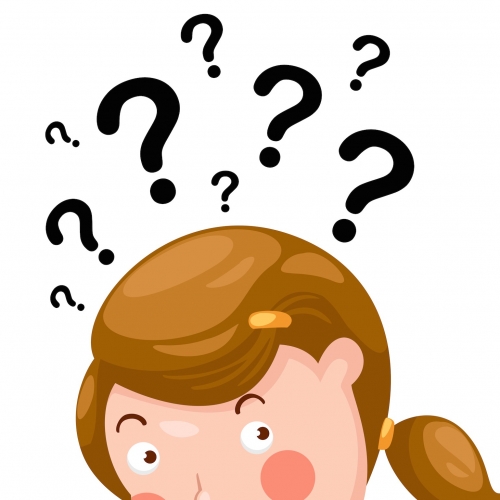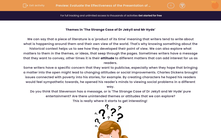Themes in 'The Strange Case of Dr Jekyll and Mr Hyde'
We can say that a piece of literature is a 'product of its time' meaning that writers tend to write about what is happening around them and their own view of the world. That's why knowing something about the historical context helps us to see how they developed their point of view. We can also explore what matters to them in the themes, or ideas, that seep through the pages. Sometimes writers have a message that they want to convey, other times it is their attitude to different matters that can add interest for us as readers.
Some writers have a specific concern that they want to publicise, especially when they hope that bringing a matter into the open might lead to changing attitudes or social improvements. Charles Dickens brought issues connected with poverty into his stories, for example. By creating characters he hoped his readers would feel sympathetic towards, he opened his reader's minds to viewing social problems in a different way.
Do you think that Stevenson has a message, or is 'The Strange Case of Dr Jekyll and Mr Hyde' pure entertainment? Are there unintended themes or attitudes that we can explore?
This is really where it starts to get interesting!

As well as the obvious, be alert for the way motifs and symbols are used to add depth of meaning through language use and how they complement the themes in this way.
Themes - The ideas that run through the story. There are several of them which are connected because they are about what it was like to live within Victorian society.
Motifs - These help us to see where the writer is pointing out an idea. It might be something we keep noticing in the imagery or way the story is told or structured.
Symbols - These are also something we keep noticing, such as colours or objects which again show us that the writer is pointing at an idea.
You should always refer to your own text when working through these examples. These quotations are for reference only.







